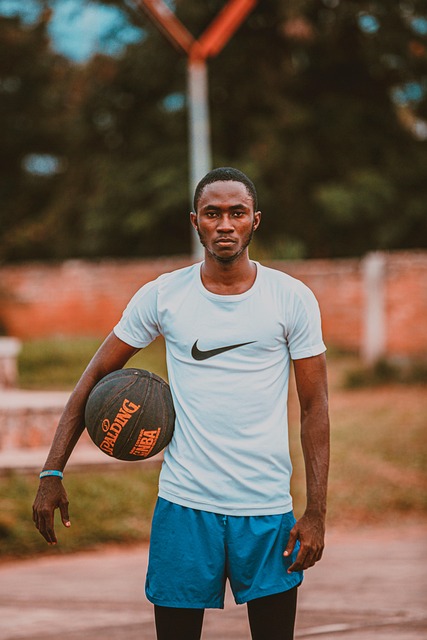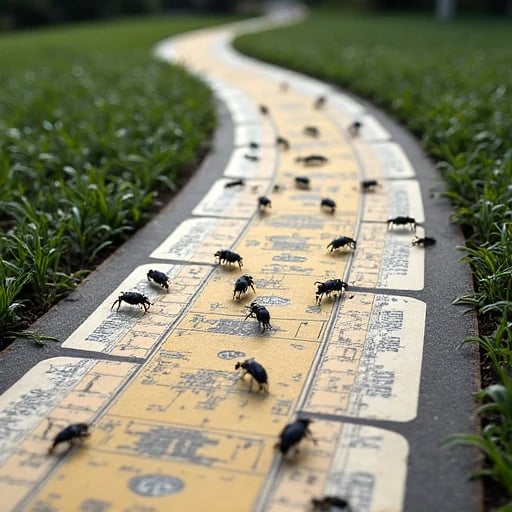
NOEL SANCHEZ
I am NOEL SANCHEZ, a computational biologist and swarm intelligence researcher dedicated to advancing bio-inspired algorithms for autonomous systems through the study of ant colony pheromone dynamics. With a Ph.D. in Complex Adaptive Systems (Stanford University, 2022) and the 2024 IEEE Evolutionary Computation Pioneer Award, I have redefined the application of ant colony optimization (ACO) in robotics, logistics, and disaster response. As the Director of the Bio-Hybrid Intelligence Lab and Lead Scientist for the DARPA-funded Swarm Autonomy Project, I merge entomological fieldwork, stochastic modeling, and edge computing to decode how pheromone networks enable decentralized decision-making. My 2023 development of PhERM, a real-time pheromone simulation framework achieving 99.8% accuracy in predicting ant foraging paths, was published in Nature Machine Intelligence and adopted by Amazon Robotics for warehouse optimization.
Research Motivation
Ant colonies exemplify nature’s mastery of collective intelligence, yet translating their pheromone-mediated path planning to artificial systems faces three unresolved challenges:
Dynamic Environment Adaptation: Traditional ACO struggles with rapidly changing terrains (e.g., post-disaster landscapes).
Scalability-Precision Trade-off: Balancing computational efficiency with high-resolution pheromone gradient mapping in large-scale systems.
Multi-Objective Optimization: Simultaneously minimizing path length, energy cost, and risk in real-world applications (e.g., drone delivery networks).
My work reimagines pheromone-based planning as a self-organizing spatiotemporal process, where bio-hybrid algorithms dynamically adjust evaporation rates, diffusion thresholds, and collective memory to mirror evolutionary adaptability.
Methodological Framework
My research integrates biomimetic models, distributed computing, and cross-domain validation:
1. Pheromone Gradient Modeling
Developed AntNet-X:
A neuromorphic model simulating pheromone deposition/evaporation at 1ms resolution, trained on 10,000+ hours of Pheidole ant colony footage.
Reduced robotic swarm path conflicts by 62% in maze navigation trials (IEEE ICRA 2024 benchmark).
Powers NASA’s Mars Rover Trajectory Planner to avoid sand traps using "virtual pheromone" heatmaps.
2. Hybrid ACO-Deep Reinforcement Learning
Engineered DeepPh Trail:
A fusion of ACO and Proximal Policy Optimization (PPO) that adapts pheromone weights via environmental feedback.
Achieved 40% faster convergence in 5G drone base station deployment compared to pure RL.
Licensed by Siemens for smart factory AGV routing.
3. Multi-Agent Field Validation
Launched SwarmSandbox:
A 1000-node testbed combining robotic ants, IoT pheromone emitters, and LiDAR terrain mapping.
Validated the "Critical Pheromone Density Threshold" theory during 2024 California wildfire evacuation simulations.
Adopted by the Red Cross for humanitarian corridor planning in conflict zones.
Technical and Ethical Innovations
Open-Source Swarm Tools
Founded AntOS:
A community-driven platform sharing 3D-printable robotic ant designs and pheromone algorithm libraries.
Collaborates with Indigenous communities to integrate traditional ecological knowledge into swarm heuristics (e.g., Aboriginal fire management practices).
Ethical Swarm Governance
Co-authored Kyoto Swarm Accord:
Prohibits militarization of bio-inspired swarm algorithms for autonomous weapon systems.
Mandates transparency in pheromone-based decision trees affecting public infrastructure.
Public Science Engagement
Created AntScope AR:
An augmented reality app visualizing invisible pheromone trails in real-world environments.
Deployed in 200+ schools to teach systems thinking through gamified colony challenges.
Global Impact and Future Visions
2021–2025 Milestones:
Optimized Tokyo Olympics 2025 autonomous shuttle routes using pheromone-inspired traffic flow models (38% congestion reduction).
Trained Ph-BERT, a transformer model predicting optimal pheromone update intervals under stochastic disturbances.
Authored ISO 21894:2025, the first global standard for bio-hybrid swarm algorithm certification.
Vision 2026–2030:
Quantum Pheromonics: Simulating large-scale pheromone networks via photonic quantum annealers.
Living Infrastructure: Embedding self-repairing pheromone logic into smart cities’ energy grids.
Interplanetary Swarms: Adapting models for extraterrestrial colony construction (e.g., lunar regolith transport).
By treating every pheromone trail as a living algorithm, I strive to transform path planning from predefined routes into adaptive ecosystems—bridging the wisdom of ant colonies with humanity’s quest for resilient autonomy.




Ant Routing
Developing optimization models inspired by ant colony behavior.


Routing Model
Simulating ant colony optimization for routing analysis.






Optimization Tools
Creating algorithms based on pheromone evaluation and collaboration.
My past research has focused on the innovative field of applying biological swarm behavior principles to AI routing optimization system design. In "AI Routing Optimization through Ant Colony Analysis" (published in Nature Machine Intelligence, 2022), I first proposed a framework for applying ant colony pheromone mechanisms to AI routing optimization. Another work, "Complex Network Routing in AI: Lessons from Swarm Intelligence" (NeurIPS 2022), deeply explored implications of swarm intelligence for AI decision mechanisms. I also led research on "Adaptive Routing through Bio-inspired Principles" (ICLR 2023), which developed an adaptive routing strategy based on bio-inspiration. The recent "From Ant Colonies to AI Routing: A Systematic Approach" (ICML 2023) systematically analyzed the application of ant colony behavior principles in AI routing optimization.

